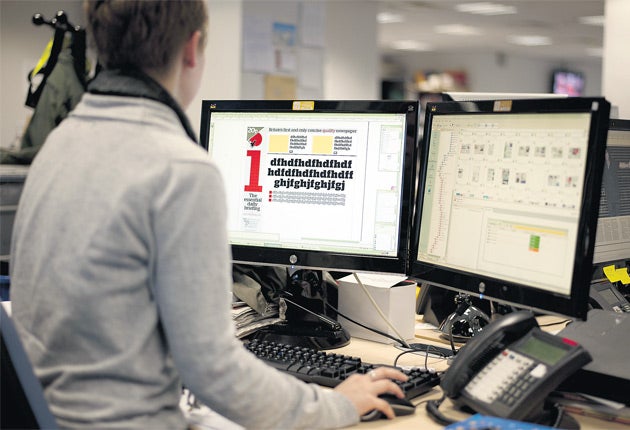Everything you wanted to know about i... and asked!
i readers are always asking us about the paper: how it works, its future, and will there be a Sunday edition? Stefano Hatfield provides the answers

In March 2010, the Lebedev family acquired The Independent and the Independent on Sunday, securing both newspapers' future. But what to do with the smallest of Britain's four daily qualities in a declining marketplace? As is the way with these things, a few of the company's big cheeses went on an awayday to have a think.
There, among the ideas presented was a suggestion by Andy Mullins, the new managing director, that The Independent produce a "line extension" (think Coca-Cola and Diet Coke), a cut-price, cut-down version of the full-price, full-size The Independent that maintained the excellence of its editorial content. It was not originally the preferred option.
However, out of research and secret dummies that the former editor-in-chief Simon Kelner was asked to prepare with a small team here in Kensington, i, then provisionally-named "The Indy", took shape. After more testing, a project team set to work, consisting of: deputy editor Adam Leigh, freelance designer Jennifer Waddell, The Independent's art director Dan Barber, editorial consultant (and so much more) Louis Jebb, associate editor Richard Askwith, and The Independent's assistant editor (production) Rhodri Jones, with input from all of The Independent's key editorial departments, particularly the production editor, Linda Taylor.
The concept was then approved by our new chairman, Evgeny Lebedev, who – of course – had to commit the financial resources.
Many experts told Evgeny and his father Alexander that they were "mad" to contemplate launching a new paper. One rival proprietor asserted i would sell between "8,000 and 30,000 copies". Nevertheless, a launch date (26 October 2010) was set, an outdoor advertising campaign commissioned and Stefano Hatfield was hired to edit the paper day-to-day. Then, everyone held their breath.
The newspaper sold 186,000 copies on its first day, and was generally well received by the chattering class of critics too. The design in particular struck a chord – as did the matrix pages in news, opinion and sport and the Views section, not to mention the daily "letter from the editor".
The mix of hard news, sport, opinion, features and arts all in 56 pages seemed to gel with the needs of busy readers.
Then came the inevitable dip in sales. Once the novelty wore off, i suffered from a pincer movement of a relative lack of national marketing exposure, and an abnormally harsh winter. Why would potential buyers get up and go out in the freezing weather to buy a paper? We were sustained by the incredible warmth of response from readers – in i@independent.co.uk, at facebook.com/i and twitter.com/theipaper. And, of course, Sir Elton John guest-edited for a memorable day.
The turning point in our brief life was the launch of our first national television advertising campaign in mid-January (featuring Dom Joly and Jemima Khan) which overnight brought in thousands of new readers. The spring saw a constant stream of first-time readers trying the paper, and many of you asked for a Saturday paper too.
So the i on Saturday was launched in May, at 64 pages costing 30p, including full weekend TV and sports guides. The Monday-to-Friday product evolved greatly from launch, reducing the amount of space given to photographs, and increasing both the story count and the percentage of serious stories. The more serious the paper, the more readers seemed to like it.
Simon Kelner left at the beginning of July, but continues to write a column, while Hatfield took over the editor's letter. What followed was the most extraordinary summer of hard news most journalists could remember. The Arab Spring, the phone-hacking scandal and the Norway atrocity would have been enough alone to grow circulation, but then came the shocking August riots, which saw i's sales break the 200,000 barrier at the news stand alone.
The Amanda Knox verdict and the death of Colonel Gaddafi have both resulted in substantial sales boosts. And recent competitions in which i has sought both new student writing and cartoonist talent have brought an avalanche of entries, again demonstrating the unique relationship the paper has quickly established with its readers — also apparent at two readers' parties we threw. The winners of these competitions will feature regularly in i.
Readers and critics alike continue to be complimentary, and – importantly – the advertising industry has also recognised i's success. i may not have revolutionised the newspaper industry, but it has created a new niche, proved the Lebedevs were not "mad" and that consumers will still reward innovation. Thank you to all our readers.
Subscribe to Independent Premium to bookmark this article
Want to bookmark your favourite articles and stories to read or reference later? Start your Independent Premium subscription today.

Join our commenting forum
Join thought-provoking conversations, follow other Independent readers and see their replies